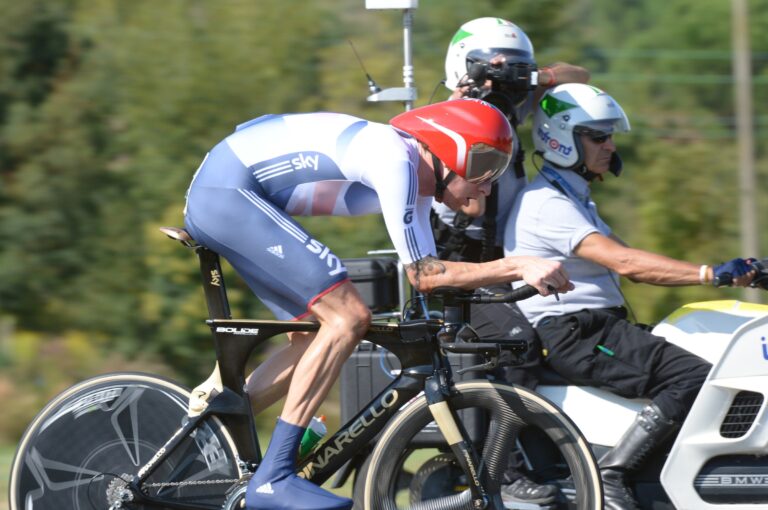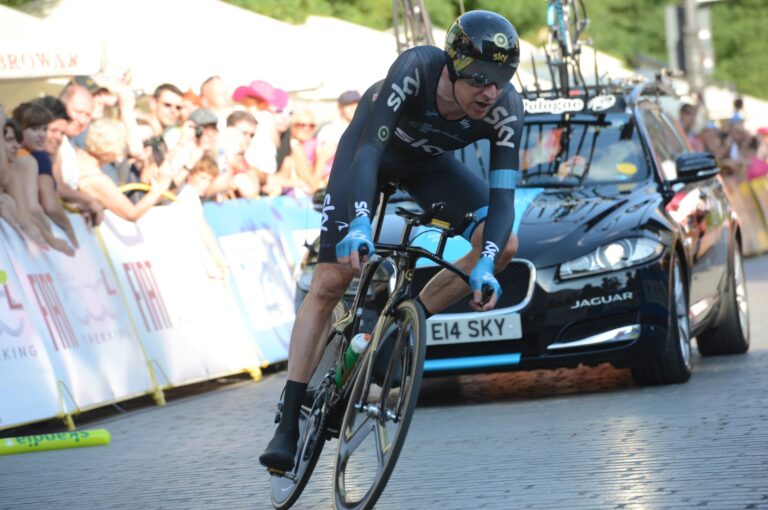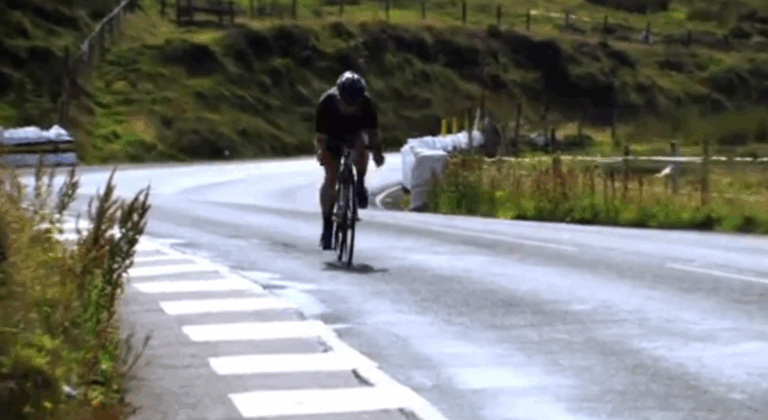Here’s a round-up of the road items that Shimano have chosen to place before the public for the first time at Eurobike.
We’ve already brought you news of the Japanese component giant’s key road launches this year – the 11-speed iterations of their second-from-top Ultegra group, and a non-series hydraulic road disc brake – so the goodies new to us at Eurobike are more subtle.

Shimano are the biggest boys on the cycling block, however, and no trip to Eurobike would be complete without a visit to their stand: one of similar size and presence to a Westfield shopping mall.
We took a look at five new offerings premiered by Shimano at Eurobike.
WH-RX31 disc-specific road wheel
The WH-RX31 wheel is the partner to the hydraulic disc brake system unveiled in June. While we saw all of the disc brake system’s constituent parts at a visit to Shimano’s UK distributor, Madison, earlier this year, including the RX31 wheel, Eurobike offered the first glimpse of the hoop in its production finish.
We’re getting used to gradually widening rim profiles, a trend inspired by the philosophy that tyre width has little impact on rolling resistance (see Specialized’s 26c S-Works Turbo tyre, for an example) and are at their most efficient on wider rims. Shimano’s principle purpose in deploying a 17mm rim profile on the RX31, however, is for additional strength (they recommend use of a 25c tyre with this wheel).
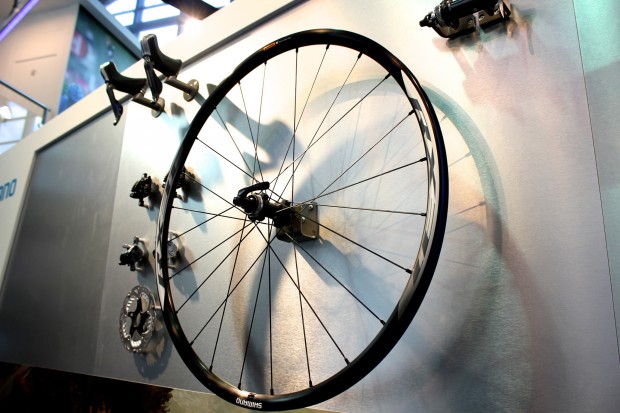
The greater requirement for wheel strength from disc brakes is further exhibited in the lacing: two-cross on both sides of the front and rear – a rarity in the modern age (compare and contrast with Shimano’s race-oriented C24, for example, more of which below). The reason? The additional bracing required to withstand the greater braking forces – a rarely reported downside to disc brakes.
The hub revolves around a cup and cone bearing system, one largely abandoned by rival manufacturers in favour of cartridge bearings. Minimalist flanges, another Shimano staple, provide the mooring for the straight pull spokes. The hub also contains the Centrelock mounting system for disc rotors, a technology present in Shimano’s mountain bike ranges for several years. The RX31 can be used with Shimano’s RT99 rotors in140mm or 160mm flavours. Madison quote £129.99 for the front, and £149.99 for the rear.
C24 tubular wheel
As product endorsements go, supplying climbing wheels to Chris Froome takes some beating (much like the man himself). When the Froome-dog left Quintana et al trailing in his wake on the slopes of the Mont Ventoux in the centennial Tour de France, his machine was rolling on Shimano C24 tubulars: an 1,100 gram wheelset produced primarily to satisfy the demands of Shimano-backed professional teams for a lightweight climbing wheel (the Zipp 202 and Campagnolo Hyperon are perhaps its closest competitors).
Much has been written about consumer-led development in the sphere of disc brakes for road bikes (they’re banned from competition use by the UCI), but the C24 offers a view of the regulations from the opposite end of the telescope.
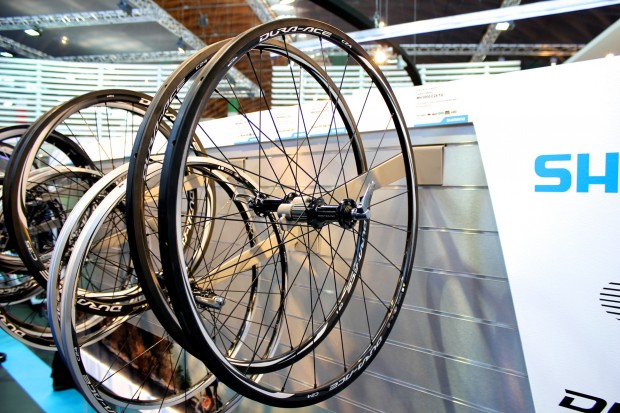
Shimano doesn’t expect to sell vast quantities of the C24 tubular (deep section aero wheels are likely to offer great appeal), but can only supply its WorldTour teams with components that have been publicly available for at least six months.
The rear is laced in a 2:1 ratio (14 straight-pull spokes in a two-cross pattern on the driveside; seven radially laced on the non-driveside). The front has 14 radially-laced, straight pull spokes). They’re held in place with an extremely low hub flange.
Expect to pay around £2,000 a set.
PRO Aerofuel TT saddle
Products designed in response to UCI regulations: part three – the saddle. If the RC31 and C24 tubular wheels show Shimano’s response to regulations governing use of disc brakes in competition and commercial availability of equipment, the Aerofuel TT saddle represents a response to technical regulations governing rider position.
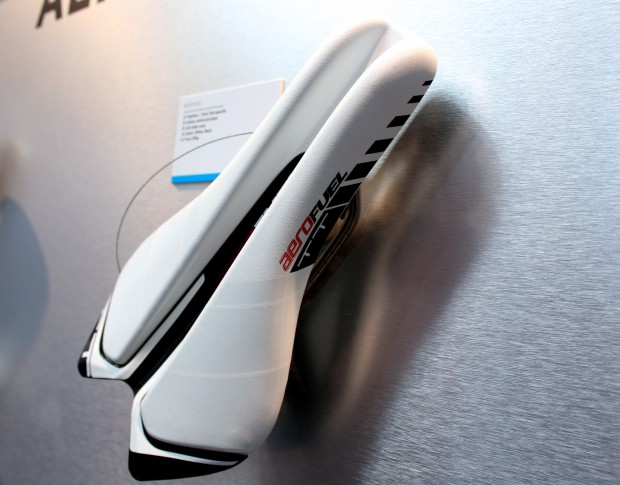
The UCI requires the nose of the saddle to be positioned 5cm behind the bottom bracket, presenting a challenge to competitors in time trials who typically position themselves on the front of the saddle.The increasingly frequent response of mechanics had been to hack off the nose, placing the rider the required distance behind the BB without discomfort. Such ad-hoc modifications were the next to be banned by the UCI.
The solution? An ever increasing range of ever shorter saddles, each with an ever blunter ‘nose’. Enter the Aerofuel TT saddle, from Shimano subsidiary, PRO. It’s a 295 gram offering with a carbon base, Ti rails, and a deep central channel, available in black, white, or black and green.
Shimano 105 carbon pedal
The trickle down of technology through the various groupsets will be familiar to long-term Shimano watchers. Carbon pedals were first introduced to the Japanese giant’s range some three years ago with the 7900 iteration of the top-tier Dura Ace group. For model year 2014, a composite-bodied pedal will be an option at 105 level.
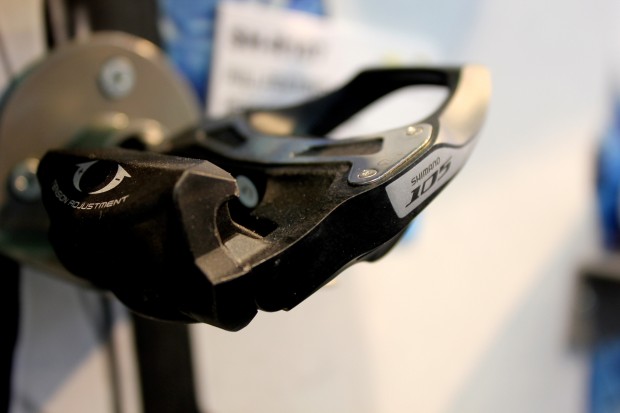
Economies have been achieved by using a lower cost carbon than the Dura Ace pedal, and a lower cost bearing than both the Dura Ace and Ultegra pedal. Bearing aside, the 105 carbon pedal is identical to its Ultegra cousin.
Data Fly Di2 dongle
If looking downwards to check what gear your turning is too difficult, or if you’re concerned about battery life in your Di2 system, Shimano has developed the Data Fly, an ANT dongle that connects to its front and rear electronic mechs via the E-Tube connector.
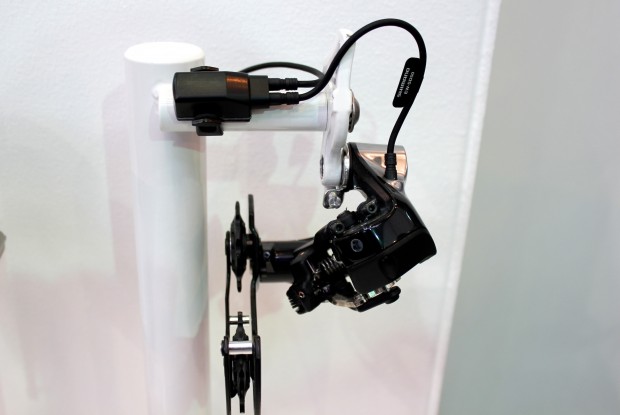
Gear and battery life data is displayed on the screen of Shimano’s Pro SCIO Alti computer, one that offers cadence, heart rate, altitude, and speed data. Shimano’s UK distributor has been given a retail price of €79.99 for the Data Fly dongle, and expect a similar price in sterling.


